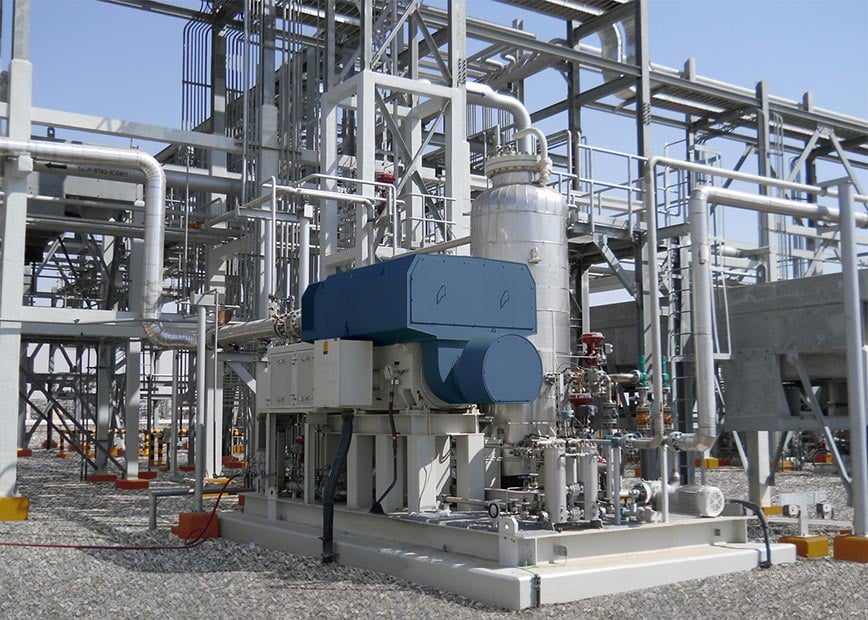Flare gas, also known as flare stack gas, is a mixture of waste gases from petroleum, natural gas and chemical processing plants which is burned off through a flare stack. It usually consists of hydrocarbons like methane, ethane, propane along with smaller quantities of hydrogen, nitrogen and carbon dioxide. Flaring off these waste gases has traditionally been used as a means of disposal and a safety measure in oil and gas production facilities. However, it is an inefficient process which causes environmental pollution and wastes valuable energy resources.
Need for Flare Gas Recovery
The flaring of gases directly into the atmosphere results in the release of greenhouse gases like methane and carbon dioxide. Methane is a potent greenhouse gas which has 25 times more global warming potential than carbon dioxide. It is estimated that oil and gas flaring contributes around 300 million tonnes of carbon dioxide equivalent emissions annually. Apart from contributing to climate change, flaring also leads to air pollution due to emissions of particulate matter, sulfur dioxide and hazardous volatile organic compounds. It also wastes large amounts of natural gas resource worth billions of dollars each year. These factors have created a pressing need to recover Flare Gas Recovery System from production sites instead of outright flaring.
Working of Flare Gas Recovery Systems
Flare gas recovery systems are installed at oil and gas production facilities to recover waste gases from the flare system instead of flaring them directly into the atmosphere. These systems consist of:
– Flare knock-out drums/scrubbers: Used to remove entrained liquids, dust and hydrates from the flare gases before further processing.
– Compressors: Used to compress the recovered gases to pressures suitable for pipeline transportation or gas processing facilities. Different types of compressors like reciprocating, centrifugal or screw compressors can be employed.
– Dehydration units: Used to remove moisture from the gases which prevents issues like hydrate formation in pipelines.
– Refrigeration units: Employed before the compressors for removing heavy hydrocarbons through condensation to protect the compressors from fouling.
– Piping and valving network: Used to transport the recovered gases from the flare knockout drum to the compressors and other processing units.
The recovered gases are then transported through pipelines to gas processing facilities for separation, treatment and monetization by utilizing them as fuel, producing LPG or natural gas. Alternatively, they may also be re-injected into the reservoir to enhance oil recovery.
Components of Flare Gas Recovery Systems
Various components are involved in an efficient Flare Gas Recovery System:
Flare Knockout Drum
The flare knockout drum acts as the first stage of separation where bulk liquids, water and solids are removed from the flare gas stream. It prevents fouling of downstream equipment. Vessel internals like mist eliminators and scrubbers aid in efficient separation.
Compressor Package
Gas compressors like centrifugal or reciprocating compressors are used to boost the pressure of recovered gases. Multiple stage compressors may be required for high pressure transmission. Different drivers like gas, electric or steam can power the compressors.
Gas Coolers
Heat exchangers like air-fin coolers or water coolers are used to cool the compressed gas stream before pipeline transportation or further processing. This prevents issues like hydrate formation in pipelines.
Dehydration Unit
Glycol dehydration systems using glycol like monoethylene glycol (MEG) or diethylene glycol (DEG) absorb water from the gas stream. Regenerated desiccant is recycled to remove bulk moisture.
Gas Filter and Separation Vessels
Filters remove residual dust and liquids before pipeline transmission. Vessels like driers, separators, slug catchers further clean the gas stream.
Piping and Valves
An elaborate piping network transports recovered gases between processing units. Block and bleed valves allow safe isolation of equipment during maintenance.
Control and Instrumentation
Control systems automate operations with transmitters, actuators etc. Safety instruments detect leaks and shutdown systems safely during emergencies.
Advantages of Flare Gas Recovery
The implementation of flare gas recovery systems in oil and gas facilities provides significant advantages:
– Reduced greenhouse gas emissions by avoiding venting of methane-rich flare gases.
– Prevention of waste of valuable energy resources worth millions annually through monetization of recovered gases.
– Improved air quality and reduced formation of toxic substances from incomplete flaring combustion.
– Potential use of recovered gases as fuel for plant operations or production of commercial products like LPG.
– Enhanced oil production if recovered gases are re-injected into reservoirs for pressure maintenance.
– Compliance with increasingly stringent environmental regulations on gas flaring in many countries.
– Increased revenue generation and improved international image through resource conservation and emission reductions.
– Minimal operational impact on production facilities while achieving efficiency and emission goals.
While initial capital investments may be substantial for flare gas recovery projects, they provide strong returns through reduced emissions, gas monetization and regulatory compliance. Along with environmental benefits, the economics further drive wider implementation globally across key producing regions.
Challenges in Flare Gas Recovery
Some challenges in successful flare gas recovery include:
– Variable composition and quality of flare gases affecting equipment design decisions.
– Difficulties associated with separations of heavier hydrocarbons, water and contaminants.
– Ensuring continuous and reliable operations despite fluctuations in flare volumes.
– Integrating processing units smoothly into existing production infrastructure.
– Addressing safety concerns around recovering pressurized flammable gases.
– High capital costs which require justification through financial and emission reduction projections.
– Sourcing of specialized equipment for remote, harsh field conditions.
– Logistical difficulties in monetizing small volumes of remote offshore or onshore facilities.
– Maintaining operational efficiency over long project lifecycles spanning decades.
Overcoming these technical, economic and logistical barriers requires extensive engineering design expertise. Close cooperation between operators, vendors, fabricators and other stakeholders is key. With refinements, flare gas recovery presents a viable solution to reduce carbon footprint in the oil and gas industry worldwide.
*Note:
1. Source: Coherent Market Insights, Public sources, Desk research
2. We have leveraged AI tools to mine information and compile it

